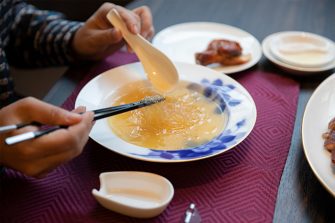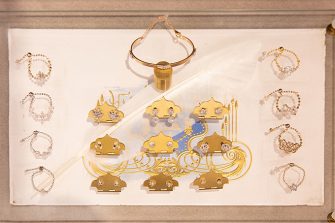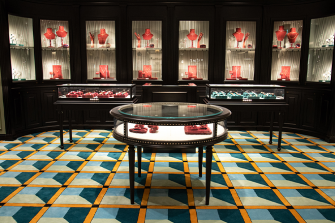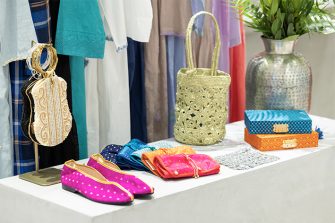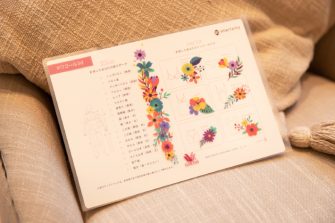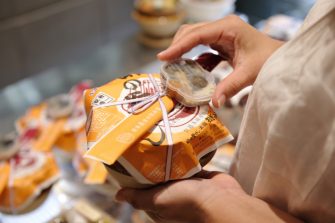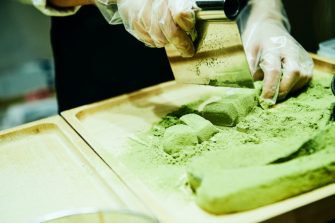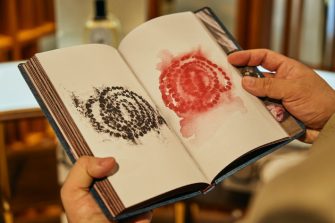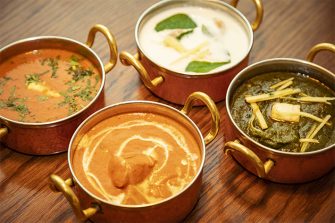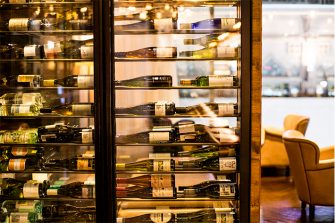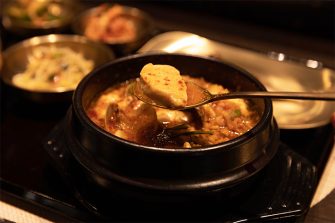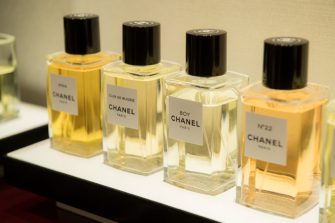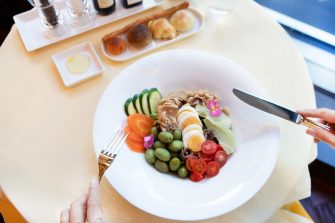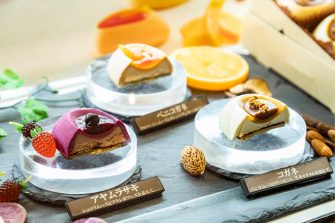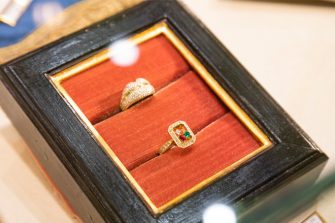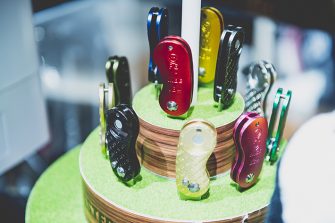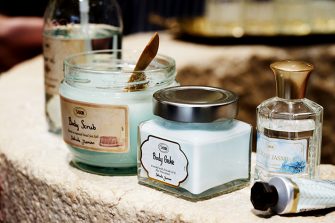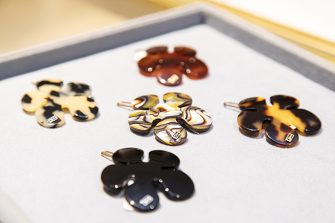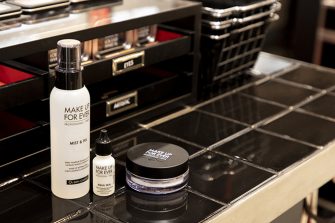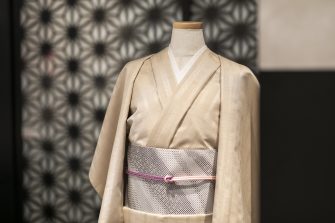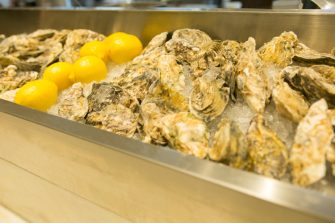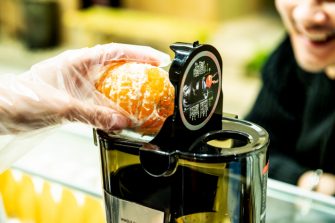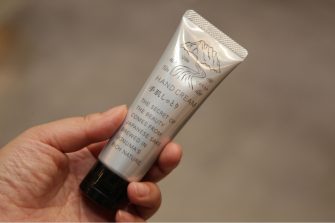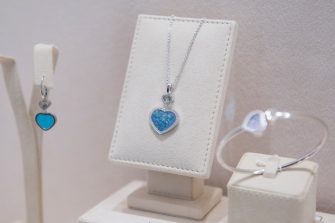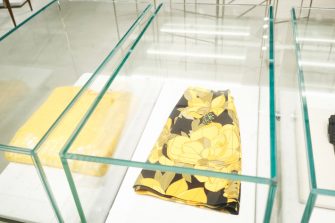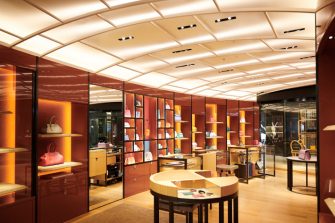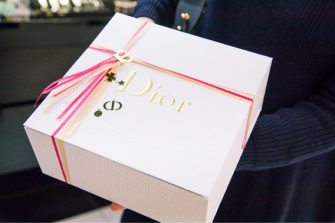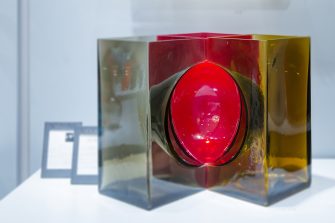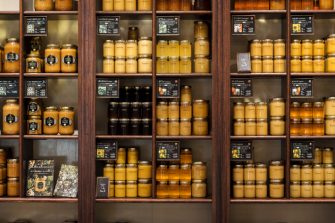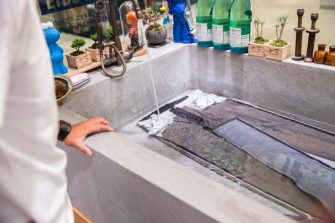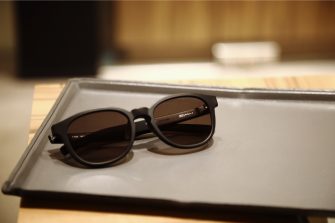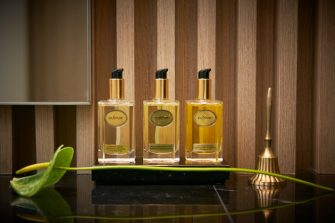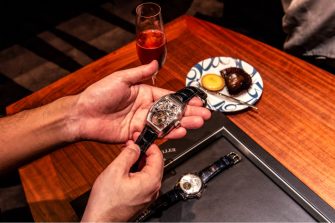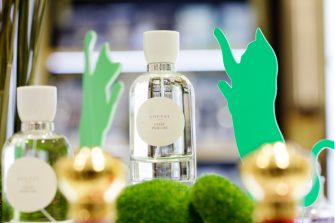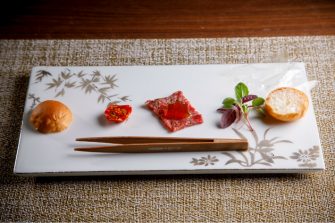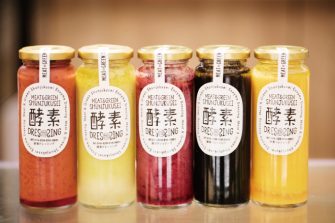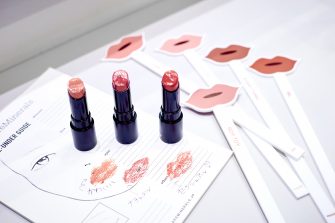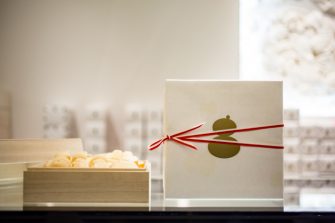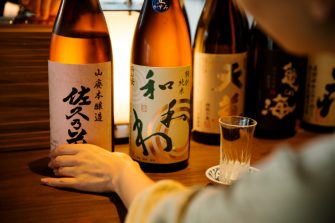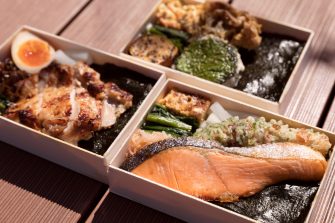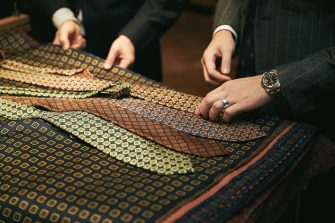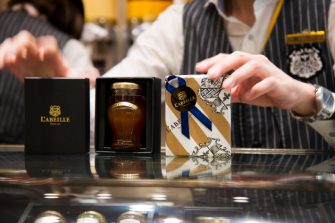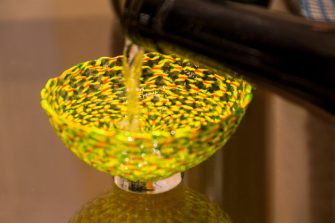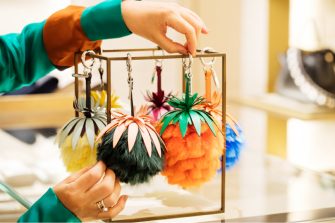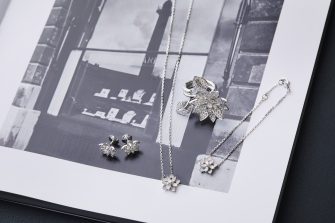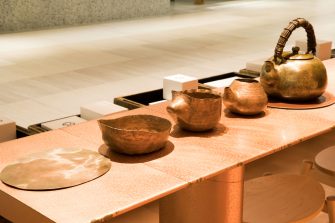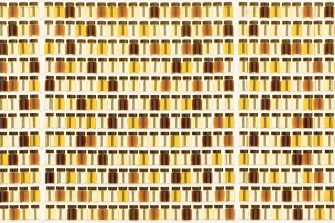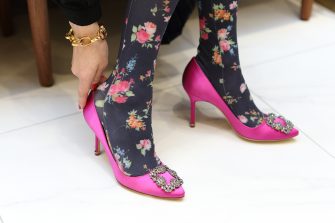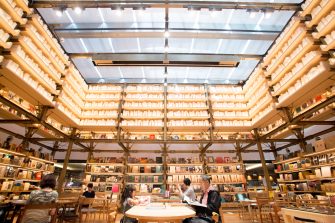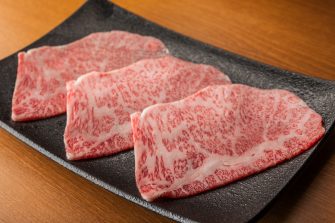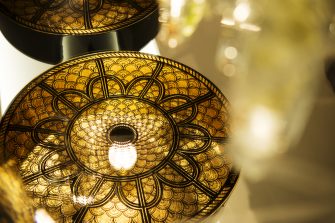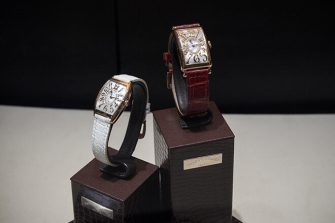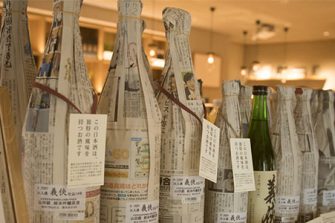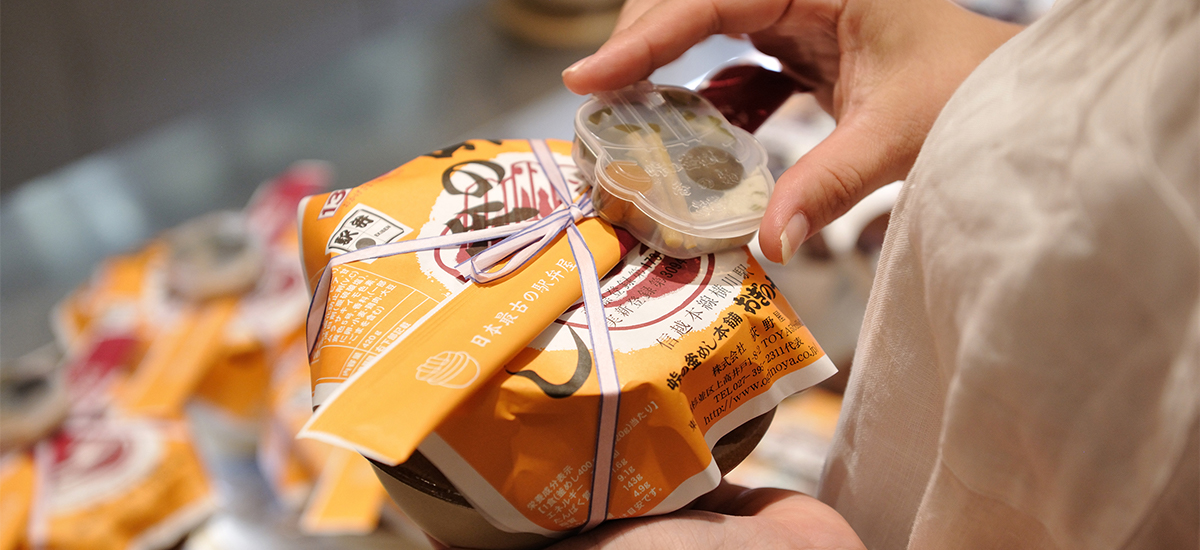

GINZA SIX EDITORS
时尚、珠宝&手表、生活方式、美容、食品…
精通各种类型的个性丰富的编辑们,在GINZA SIX上闲逛
记述走路发现的乐趣。
在银座享受美食之旅 A Sojourn of Entrancing Flavors in Ginza
田中美保
GINZA SIX EDITORS Vol.101
想出去旅行。过了春意盎然的春天,没有夏天的气息,转眼间秋天的气息。差不多该去哪儿了…这也是没办法的事。旅行的妙趣果然还是与当地特有的景色、人、味道的邂逅。特别是对于贪吃的我来说,旅行的目的是1、2、3都是“食”。为了寻求只有在那里才能吃到的好吃的东西,经常去那片土地。
在难以旅行的现在,银座有一个能够一口气满足我“旅行”欲望和“贪吃”欲望的地方。GINZA SIX的B2F。北至北海道,南至福冈县,全国各地的美食琳琅满目。作为贪吃的编辑,我看了很多所谓的“百货地下”的情况,但是没有比这更令人心动的阵容了。从便当到甜品、饮料等,不仅可以买到令人心旷神怡的特产,还有为了自己的奖励品、让家里的时间变得快乐的美味食物也太齐全,来到这里就一定会散财。啊,真是个罪行的地方…。
因此,这次以“美味之旅”为主题,在GINZA SIX的B2F进行了奔走。这次旅行太开心了! 我断言这个计划还有6个方案。
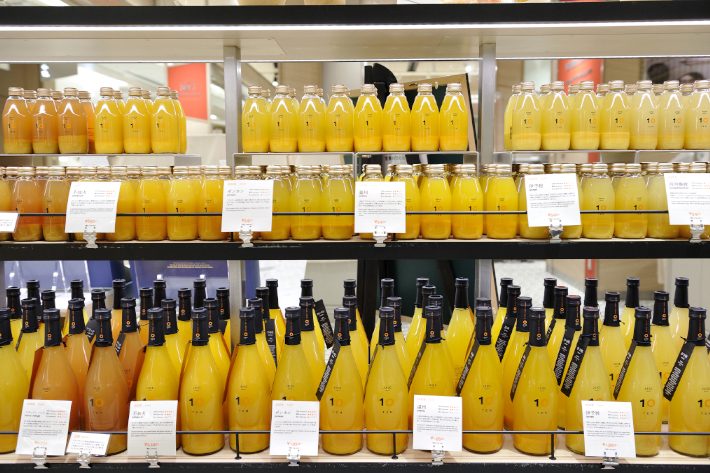
首先,最先到访的是“10FACTORY”。橘子色的美丽渐变让人情绪高涨。本店位于爱媛县松山市,是为了提升日本第一的柑橘王国・爱媛县的橘子产业而诞生的品牌,从果汁到果酱、果冻、干果和蜂蜜等阵容丰富。
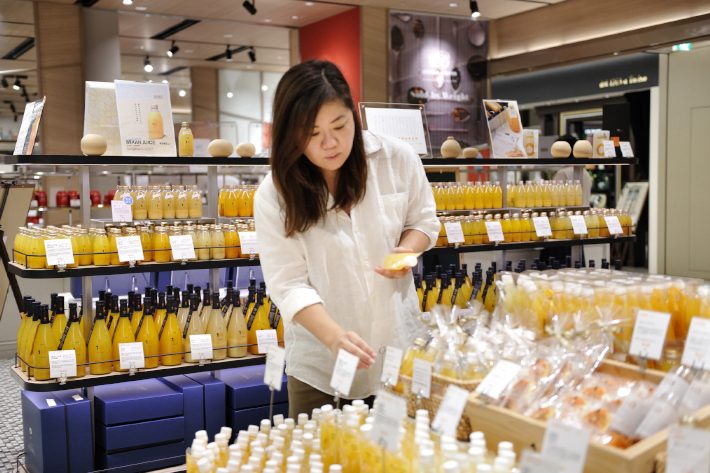
看到排列着果汁的架子,然后去果冻柜台。简直就像果冻花盛开一样的花田(对我来说是这样)让人着迷。从认真的表情可以看出,其实所有种类都忍住了想买的地方。
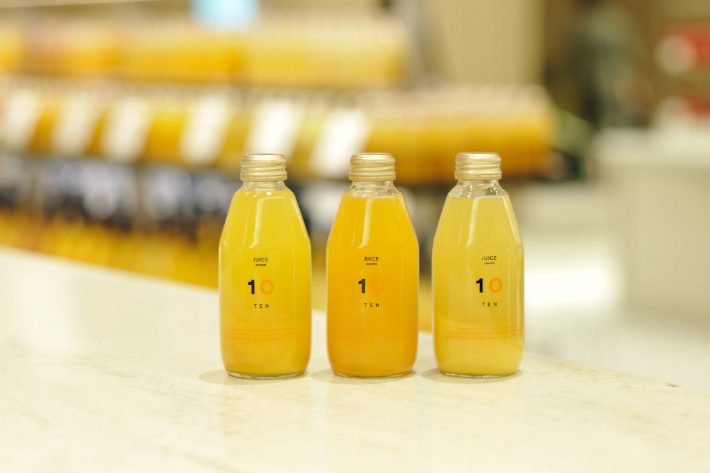
“如果选择能让人感觉到在爱媛县松山旅行的果汁的话?”一边提问一边选择了3瓶。右起为伊予柑、甘平、果试28号。代表爱媛的品种“伊予柑”(500日元※以下全部不含税价格)的甜味和酸味的平衡完美,是The橘子的味道。接着的“甘平”(704日元),其特征是极好的甜味。培育起来很难,据说是稀少的爱媛县原创品种。最后喝的“果试28号”(704日元)也是爱媛县原创品种。洋溢着桃子风味的热带甜味让人欲罢不能! 心情已经是爱媛了。
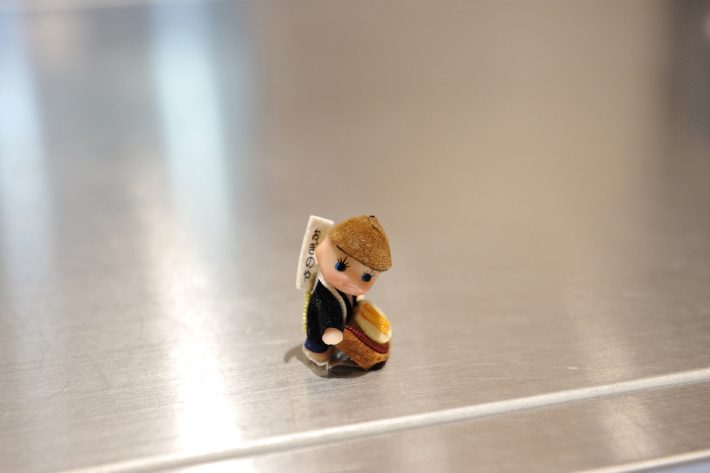
那么,说到旅行就是车站便当。丘比拿着什么…?
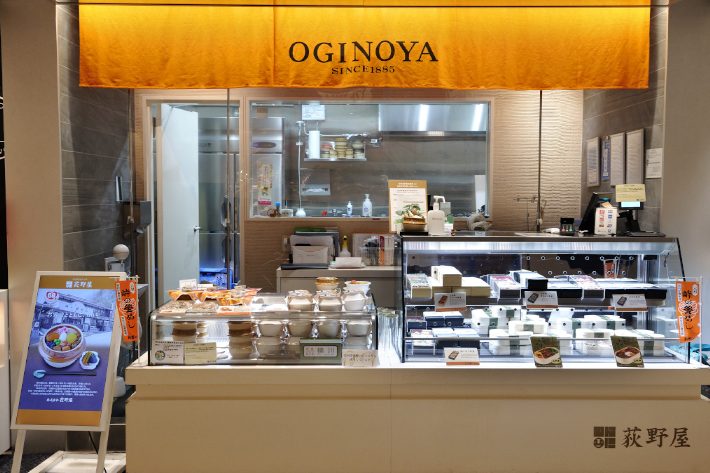
说到车站便当就是“荻野屋”的“山顶釜饭”! 去群马县和长野县方面的时候,看到的话总是因为条件反射而买。(丘比拿着的是“山顶的什锦饭”)
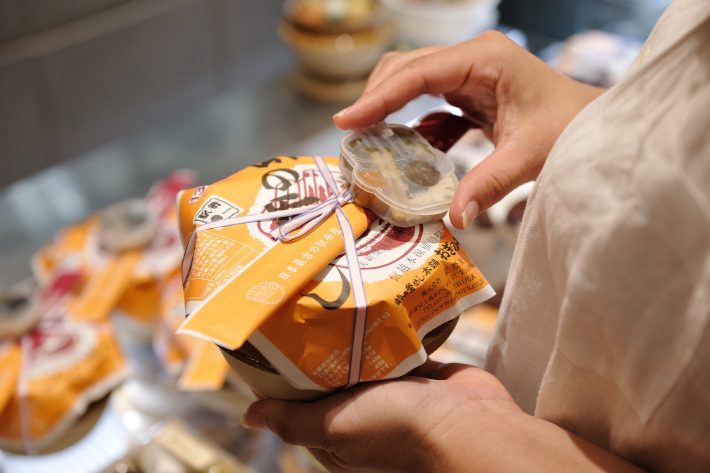
在银座这个地方,竟然能买到“山顶的什锦饭”。…。沉甸甸甸的是,放得满满的小菜和米饭自不必说,容器非常漂亮的益子烧砂锅。为了纪念旅行,每次都不扔掉就带回家,家里有很多这个空锅。在家里直接点火,做饭很方便。轻轻打开橘色的包装纸,打开锅盖的瞬间,栗子、鸡肉、鹌鹑和杏美丽地排列着的样子,无论看多少次都很兴奋。
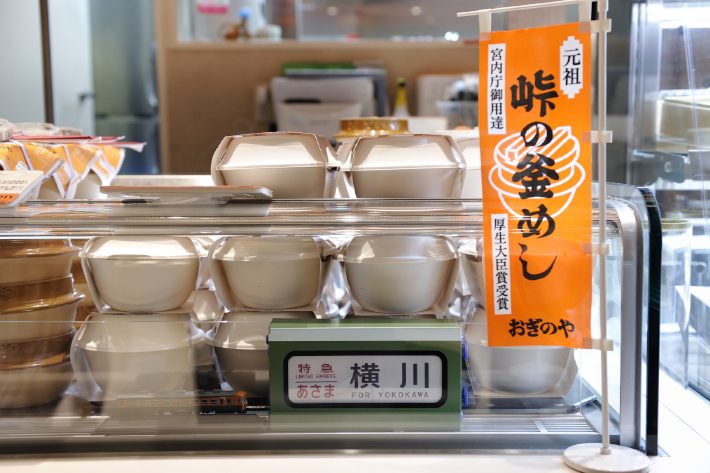
1958年,信越本线横川站开业的同时诞生的名产车站便当“山顶的釜饭”(1,019日元)。据说当时放入保温性高的砂锅中的车站便当是划时代的。最近也出现了环保的纸容器。使用甘蔗渣制成的非木材纸浆制成。55年以上受人喜爱的长期畅销书也随着时代的变化而变化。这就是老字号。
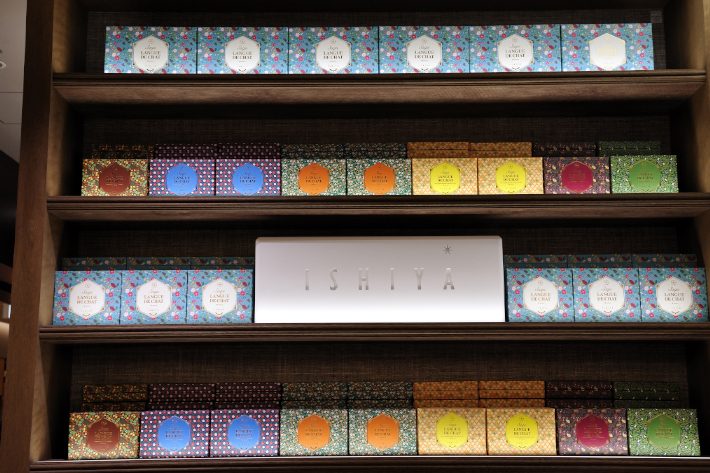
接着旅行的是北海道。说到北海道特产的经典就是“白色恋人”,这家店是由因“白色恋人”而为人熟知的“石屋制果”所经营的店,名字也是“ISHIYA GINZA”。以能感受到北海道特色的点心为主题,只有在北海道外才能买到的商品成为话题。据说,北海道人民也曾向当地人索要这个点心作为东京特产的情况,好像发生了极好的逆进口现象。
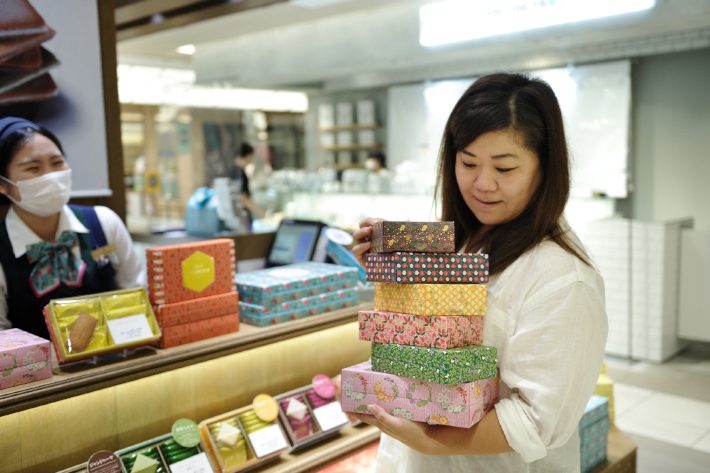
焦糖、北海道奶酪、北海道葡萄酒等6种口味的巧克力,用五颜六色的兰·德·夏做成三明治的“朔”是最受欢迎的。确实是继承了“白色恋人”DNA的点心,但最让人心跳不已的是这个美丽的箱子! 以各风味和北海道花草为主题的图案像瓷砖一样铺满的五颜六色的箱子很高级,最适合礼物。话虽如此,因为太棒了,所以我忘记自己用和自己,堆箱子的我。和葡萄酒一起享受“朔”之后,这个箱子怎么用呢?…? 欢欣雀跃不已。
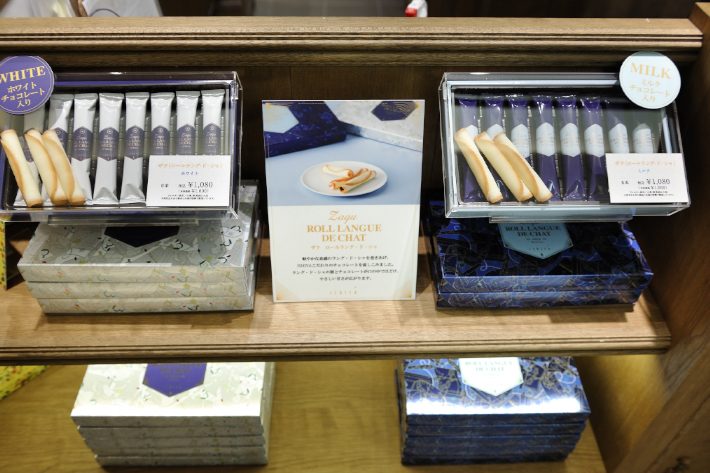
哦,在这里发现了银色和蓝色闪耀的箱子! 这是新登场的“扎克”(1000日元)。精心制作的巧克力,用兰•德·夏将其卷起来的绝品。

想在最佳状态下携带巧克力。能够充分理解这种贪吃的愿望,诞生了一件非常棒的道具。是的,保冷包(700日元)。在加入了6种“朔”的Asoto包装中使用的淡蓝色可爱图案的包里,装满了北海道气氛的点心,伦恩,笑容满面。顺便说一下,这个淡蓝色的包包图案有6种不同的风味图案。
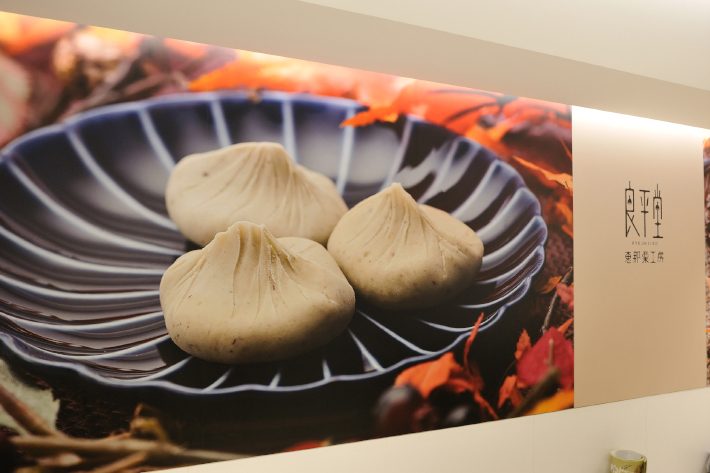
接下来,为了品尝秋天的味道,去岐阜县。这里的“惠那栗工房良平堂”创立于1946年,是岐阜县惠那市只有一家栗子点心的专卖店,到2021年1月31日为止现在期间限定开店。顺便说一下,岐阜县东南部的惠那地方(中津川市・惠那市)是栗子的名产地。
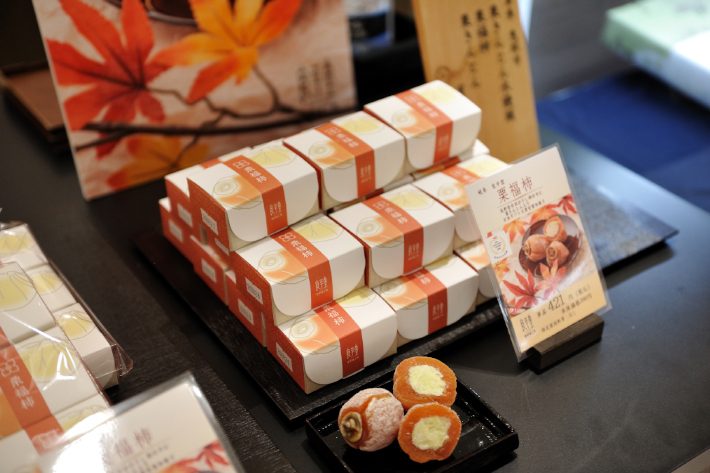
栗子金团很有名,和栗子金一起作为代表点心的是“栗福饼”(390日元)。橘色鲜艳的长野县市田的柿饼中加入了栗子金团,粘糊糊的口感让人癖好。剥柿子皮晒干,放入缝隙取出种子,装栗子金团。所有这些都是熟练的工匠手工制作的,真让人吃惊! 这是2013年开始供奉在伊势神宫的名果。伴随着这样的轶事,用这个来给长辈和年长的人送礼物吧。

除此之外,不管切哪里都有栗子满满的栗子羊羹、栗子铜锣烧、不是甜土豆的栗子和栗子等各种各样的栗子点心。正是围绕栗子之旅in岐阜。
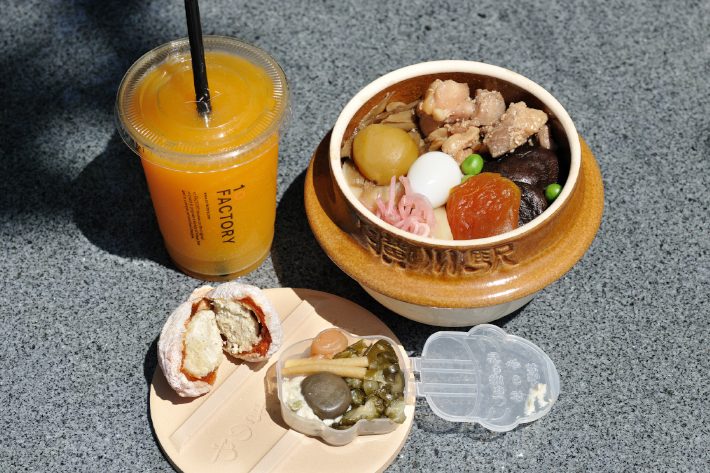
在爱媛县松山吃橘子汁,群马县·横川什锦,岐阜县·惠那吃栗子的点心,北海道·札幌做巧克力点心。收集扎根于各地风土的“好吃的东西”,完全有旅行的心情。
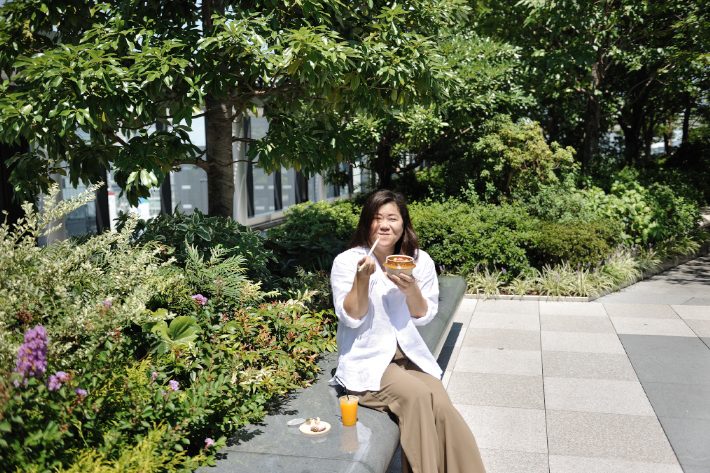
在东京银座的正中央,绿意盎然的屋顶“GINZA SIX花园”,请享用旅行的战利品!
因此,“在银座进行美味旅行”的第一次(?)顺利结束。慢慢地,一边品尝当地的味道,一边吃着贪吃的旅行还在继续。下次去哪儿呢?
Text: Miho Tanaka Photos: Jun Hasegawa Edit: Yuka Okada(81)
I want to travel, I want to rove. Sheltered in place all spring, I’ve seen summer come and go in the blink of an eye, with none of the usual summer things, with signs of fall now already in the air. I want to get out, I want to go somewhere—I can’t help feeling fidgety thinking about this. The pleasure of travel, of course, lies in the scenery, people, and flavors of the very place you’re visiting. I can’t get enough of good food, so when I travel, food is first, second, and third on my agenda. I look for delicious things unique to a place and head there. Normally, this is something I do fairly often.
Travel isn’t so easy now, but there’s a place that quenches my thirst for travel and desire for great food. That’s Ginza—specifically, the second belowground floor of GINZA SIX. From Hokkaido in the north to Fukuoka Prefecture in the south, there’s delicious food here from all over Japan. As the food-loving editor that I am, I’ve looked around at the various food floors in the basements of various department stores, but none offers the sparkle and appeal of the lineup at GINZA SIX. From bento to sweets and drinks to thoughtful, tasteful gifts and souvenirs—all of this is here. But you can also get a little something for yourself. There’s delicious food here—almost too much of it!—to enrich your time at home. So when I come here I spend, spend, spend. Sinful indulgences? Perhaps…
My theme today is travel with a focus on entrancing flavors. I’ve come to the second belowground floor at GINZA SIX. This trip is too much fun—but it’ll require six more to fulfill my entire agenda of gourmandise!

First up is 10FACTORY. Seeing such beautiful shades of orange sets my heart aflutter. With a flagship store located in Matsuyama, Ehime Prefecture, Japan’s No. 1 citrus producer—the Citrus Kingdom, as it’s known—this brand promotes the prefecture’s mikan industry. The store sells everything from juice to jams, jellies, dried fruit, honey, and more—a rich lineup.

After staring at the shelves of juices so hard, I head to the jelly section. It’s a field of flowers, of jelly flowers blooming their hearts out—or so it strikes me. It leaves me entranced. You can tell from the serious look on my face I’m doing my best to hold back from buying every single variety.

Peppering the sales associate with questions like, “How about a juice that makes you feel like you’re vacationing in Matsuyama in Ehime Prefecture?”, I end up choosing these three. From the left, Iyokan, Kanpei, and Kashi No. 28. Iyokan (500 yen; all prices listed before tax), a variety of mikan for which Ehime is especially well known, provides a perfect balance of sweet and tart—the definitive mikan flavor. Next is Kanpei (704 yen), the ultimate in sweetness. This variety is hard to grow and a rare variety original to Ehime Prefecture. The last one I drink is Kashi No. 28 (704 yen), also an original Ehime variety. I can’t get enough of the tropical sweetness with peach-like flavors. In my mind, I’m already in Ehime.

How can one travel in Japan without buying a bento at the train station? Can you see what Kewpie has there?

To my mind, the ultimate train station bento is Toge no Kamameshi from Oginoya. It’s something I buy reflexively whenever I head to Gunma or Nagano Prefectures. (In passing, Kewpie here is holding a Toge no Kamameshi bento.)

I can’t believe I can get a Toge no Kamameshi in Ginza. Wow—it’s heavy. It’s because so many ingredients are stuffed in there, but also because the container is an actual clay bowl fired in the famous pottery village of Mashiko. A souvenir from the trip; you won’t throw it out each time, you’ll bring it home to keep. I have a bunch of these bowls at home. They stand up to direct heat, so I use them to cook rice. Very convenient. I carefully unwrap the orange wrapping paper, remove the lid, and peer at the beautifully arranged toppings of a chestnut, chicken, a boiled quail egg, and a dried apricot. It’s uplifting no matter how many times I’ve seen it.

The famous Toge no Kamameshi (1,019 yen) train station bento was created in 1958 alongside the opening of Yokokawa Station on the Shin’etsu Main Line. At the time, a station bento provided in a clay pot, which keeps food warm exceptionally well, was revolutionary. They recently introduced environmentally-friendly paper containers made from a non-wood pulp fiber made from crushed sugarcane residue. Even a perennial best seller beloved for more than 55 years changes when the times change. This is the commendable spirit of a venerable institution like Oginoya.

The next stop on my trip is Hokkaido. Shiroi Koibito is the standard Hokkaido souvenir. It just so happens that this store is run by Ishiya Co., makers of Shiroi Koibito, the little langue de chat cookies with white chocolate. The name, too, is ISHIYA GINZA. Strangely enough, in the context of cookies and sweets that put one in a Hokkaido state of mind, products available only outside Hokkaido have emerged as a hot topic. They say Hokkaido residents often ask someone visiting Tokyo to bring back some of these Tokyo-only Hokkaido sweets—a nice example of the faux nonnative import phenomenon, perhaps.

Of the six flavors of chocolate available, all drawing on Hokkaido ingredients like caramel, Hokkaido cheese, and Hokkaido wine, Saku, sandwiched between multicolored langue de chat is the most popular. The sweets here truly inherit the DNA of Shiroi Koibito, but I’m just as inspired by the lovely boxes. Their design is based on the flavors and flowering plants of Hokkaido, with motifs arranged in tile-like patterns. They’re elegant and make great gifts… I say this, but they’re so nice I forget myself and pile them up in my arms just for me. After enjoying Saku with some wine, what should I do with the boxes? Again, I’m filled with elation just thinking about it.

Oh my, look what we have here, sparkling boxes of silver and blue. These are the new Zaku (1,000 yen). Made with premium chocolate rolled up in langue de chat—an exquisite treat.

I set myself the mission of getting this chocolate home in the best possible condition. It so happens that the perfect item to meet this particular need exists: this little cooler bag, the Horei Bag (700 yen). The bag features the same charming light blue pattern found on the Saku boxes filled with six-flavor assortments. Imagine my delight with all these sweets, all brimming with Hokkaido spirit! The light blue pattern on the bag, incidentally, incorporates each of the six motifs corresponding to the six flavors.

My journey continues. For some seasonal fall flavors, up next is Gifu Prefecture. This is Enaguri Kobo Ryoheido, a chestnut confectionary specialist founded in 1946 as a single storefront in Ena, Gifu Prefecture. The location here will be in GINZA SIX for a limited time, until January 31, 2021. In case you were wondering, the Ena region of southeastern Gifu Prefecture (the cities of Nakatsugawa and Ena) is renowned for its chestnuts.

Richly flavored sweets made with sweet Ena chestnuts include the famous kuri kinton (candied chestnuts). Another famous chestnut confection is Kuri Fukumochi (390 yen), comprising kuri kinton stuffed in a vibrant orange-colored persimmon, peeled, dried, and cut open to remove the seeds, from Ichida in Nagano Prefecture. The autumnal textures of sticky persimmon and soft, flaky chestnut are positively addictive. It’s a bit of a surprise to learn everything is done by hand by skilled confection makers. I’m told these famous chestnut confections have been bestowed as offerings at Ise Jingu shrine since 2013. I’ll be sure to relate this story when I give them as gifts to my superiors or those senior to me.

The store also has chestnut yokan (sweet chestnut paste jelly) and chestnut dorayaki (pancake sandwiched with sweet chestnut paste). Cut into one and you will find chestnuts. Plus there are also Japanese-style baked sweet chestnut cakes—a huge variety of chestnut confections. Truly a chestnut-filled trip in Gifu.

With my mikan juice from Matsuyama, Ehime Prefecture, kamameshi from Yokokawa, Gunma Prefecture, chestnut confections from Ena, Gifu Prefecture, chocolate confections from Sapporo, Hokkaido, I’m all set. I’ve assembled delicious fare from the local land and culture. I can now say I’ve well-travelled.

Here I am, enjoying the spoils of my travel at GINZA SIX Garden on the rooftop, a sanctuary of green in the middle of Ginza, Tokyo.
And so my first (?) sojourn of entrancing flavors in ginza comes to a happy conclusion. I’ve leisurely partaken of the flavors of each locality to my heart’s content. But this food-lover’s travels are far from over. Where next?
Text: Miho Tanaka Photos: Jun Hasegawa Edit: Yuka Okada(81)
田中美保
在《Precious》、《和乐》、《Domani》中,编辑、执笔旅行、饮食、室内装饰等生活方式特集、文化页面、采访报道等。除了阿川佐和子著的《看之力》之外,还负责食谱书和生活方式书的书籍。对好吃的东西的执念非常厉害,作为贪吃的编辑也十分活跃。


